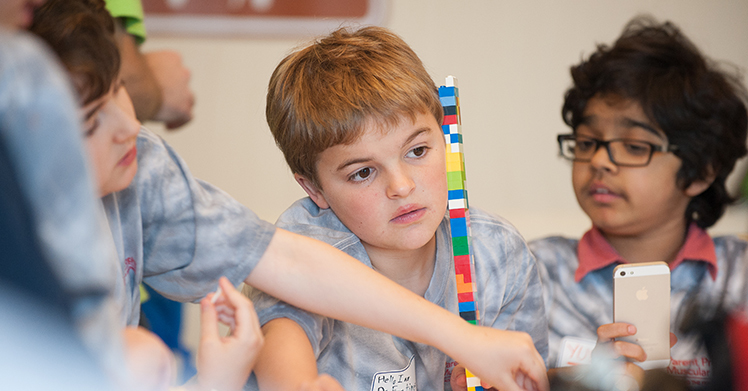
Yesterday, Parent Project Muscular Dystrophy and Duchenne Parent Project-Netherlands (DPP) co-hosted the first ever conference on assistive technology for Duchenne muscular dystrophy. There were twenty-five participants in the workshop, from six countries, representing academia (both researchers and engineers), companies, clinical practice, and patient advocacy. PPMD was represented by Pat Furlong, Annie Kennedy, and John Porter. Elizabeth Vroom (DPP-Netherlands) set the tone for the meeting with her observation that, as the lives of those with Duchenne are longer due to better care and drugs soon to come to market, these new technologies could address the needs of privacy and independence. The workshop was an important first step for our community.
During the course of the presentations, it very quickly became clear just why it was important to have a targeted effort for Duchenne. As some of you have noted, assistive technologies, supporting leg, arm, or whole body function, have been developed for several other diseases and conditions (including stroke and spinal cord injury) and these technologies may be applicable for Duchenne. But, speaker after speaker at the workshop showed how they were both developing new technologies, as well as modifying existing technologies, to meet the special requirements of Duchenne. Work on devices such as the Solid Suit and the X-AR device require very specific biologic and clinical knowledge of Duchenne, and an “off the shelf” device developed for another condition would hardly meet our user requirements. For example, knowledge of the difference in skeletal muscle MRI of the arm versus the leg was discussed and may be a critical factor in how assistive devices are best designed for and used in Duchenne. Likewise, the muscle stiffness seen in Duchenne, but not in other conditions that devices have been developed for, will be a very important factor in how Duchenne-specific devices are designed. If we don’t help support these efforts to target the dystrophinopathies, with our time, expertise, and financial support, there would not be the strong focus on and enthusiasm for development of assistive devices for people with Duchenne.
A central theme that emerged yesterday was that, while the academics and companies are in competition to get assistive devices to the market for Duchenne, there are substantial areas of common interest where sharing of lessons learned and solving common problems together makes sense and indeed will raise all boats. Areas that were identified for collaboration included how to better understand the specific needs of those living with Duchenne, how to collect data on assistive devices so that studies by different groups are comparable, and identification and standardization of the endpoints that are most useful in assessing the value of these devices. Many device developers have done surveys of our boys and men living with Duchenne and their caregivers, and have identified common needs to help guide device development. Annie Kennedy shared information on the survey that PPMD conducted with Solid Ventures (for the Solid Suit) and those results were compared with surveys from other engineering groups. Everyone at the workshop understood the importance of getting assistive devices, particularly for the upper extremity, out to the community as quickly as possible (emphasizing availability now, over achieving the perfect device), but also respected the feedback that making devices as un-intrusive as possible was a key goal.
Considerations of device approval by the regulatory authorities, availability, cost, and miniaturization of the technology were important parts of the discussion yesterday. Assessing the functional value of the assistive devices, using tools such as the reachable workspace endpoint under development at University of California-Davis, was appreciated as an important factor in both seeing that devices meet user needs as well as helping ensure that costs could be covered by insurance programs.
Overall, this first workshop of developers of assistive technologies for Duchenne represents an exciting event, but still a first step towards increasing independence for our community. Folks that have never spoken before exchanged ideas and business cards and now better appreciate the specific needs of those living with Duchenne and how they may work together to meet them. This is all good. Just as some drug developers have focused on personalized medicine approaches like stop codon read-through and exon skipping, some aspects of assistive devices will have to be tailored so they provide personalized support. This requires that the device developers interact with our community—they clearly “get that” after this workshop.
The patient advocacy messages for participants in the Let’s Get Them Moving Workshop (from Elizabeth Vroom and Pat Furlong) were to recognize the unmet need in devices for those with Duchenne, encourage collaboration, and press forward with a targeted initiative that emphasizes development of a range of devices, leverages governmental and industry support through PPMD and DPP seed funding, pays careful attend to steps needed to obtain regulatory approval, and provides for reimbursement so no families are left behind in access to assistive devices. Particularly important was the need to develop devices for those still retaining considerable muscle function, with an eye on such devices providing protection and preservation of that function as long as possible.
The next steps, that are now in discussion between PPMD and DPP include how we can further facilitate the development of these devices through (1) our investments that leverage other funding for device development and FDA approval and (2) our ability to again convene discussions such as those that happened yesterday, to accelerate developments that can help all of those living with Duchenne. We hope you will consider supporting PPMD’s Robotics Initiative so that we can continue to support the exciting work-in-progress we witnessed today. We believe in these technologies and appreciate your support!To learn more about PPMD’s Robotics Initiative, click here.



 by: Parent Project Muscular Dystrophy
by: Parent Project Muscular Dystrophy

